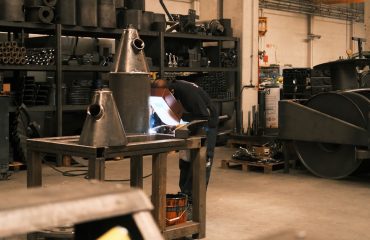body { font-family: sans-serif; line-height: 1.6; }
h1, h2, h3 { color: #333; }
img { max-width: 100%; height: auto; }
In a world where fire safety is paramount, fire-resistant steel materials play a crucial role in protecting lives and property. From skyscrapers to industrial plants, these specialized steels offer invaluable protection against the destructive power of flames. This comprehensive guide explores the fascinating world of fire-resistant steel, delving into its properties, applications, and the future of this critical technology.
Understanding the Properties of Fire-Resistant Steel
Fire-resistant steel isn’t simply “fireproof”; instead, it’s engineered to withstand high temperatures for extended periods, maintaining its structural integrity even under intense heat. This resistance stems from a combination of factors. Firstly, the alloying elements within the steel play a vital role. Elements like chromium, nickel, and molybdenum enhance the steel’s high-temperature strength and oxidation resistance. These elements form a protective oxide layer on the surface, slowing down the rate at which the steel oxidizes and weakens at elevated temperatures. Secondly, the microstructure of the steel is meticulously controlled during manufacturing. This ensures uniform properties throughout the material, preventing localized weaknesses that could compromise its performance under fire conditions. Finally, the thickness of the steel plays a significant role; thicker sections naturally offer greater resistance to heat transfer and deformation.
Diverse Applications of Fire-Resistant Steel
The applications of fire-resistant steel are incredibly diverse, reflecting its critical role in various sectors. In construction, it’s a cornerstone of high-rise buildings, forming the structural framework of fire-rated walls, columns, and beams. It’s also essential in fire-resistant doors, shutters, and other building components. The automotive industry utilizes fire-resistant steel in vehicle components that require exceptional heat resistance, such as exhaust systems and brake components. Industrial applications are equally significant, with fire-resistant steel protecting critical infrastructure in power plants, refineries, and chemical processing facilities. Furthermore, it’s used in the manufacturing of fire-resistant safes and storage containers, ensuring the protection of valuable documents and equipment.
Different Types and Grades of Fire-Resistant Steel
The market offers various types and grades of fire-resistant steel, each tailored to specific applications and performance requirements. These grades are typically classified based on their yield strength and their ability to withstand high temperatures. Common types include stainless steels (with varying chromium and nickel content), low-alloy steels with additions of elements like molybdenum and silicon, and high-strength low-alloy (HSLA) steels. The choice of grade depends on factors such as the anticipated fire exposure duration, the required load-bearing capacity, and the overall cost considerations. Detailed specifications are usually provided by manufacturers and are crucial for selecting the appropriate material for a given project.
Testing and Certification of Fire-Resistant Steel
Rigorous testing and certification procedures ensure that fire-resistant steel meets the required safety standards. Standard fire tests, such as those defined in ASTM (American Society for Testing and Materials) and ISO (International Organization for Standardization) standards, evaluate the material’s performance under controlled fire conditions. These tests measure the steel’s ability to maintain its structural integrity, strength, and dimensional stability at elevated temperatures. Independent testing laboratories conduct these assessments, verifying compliance with relevant building codes and regulations. Certification ensures that the steel used in construction and other critical applications meets the specified fire-resistance ratings, providing confidence in its ability to protect against fire hazards.
Future Innovations in Fire-Resistant Steel Technology
Research and development continue to drive advancements in fire-resistant steel technology. Efforts are focused on developing steels with enhanced high-temperature strength, improved oxidation resistance, and enhanced formability. The use of advanced manufacturing techniques, such as additive manufacturing (3D printing), offers the potential to create complex shapes and customized designs with optimized fire-resistant properties. Furthermore, research is exploring the integration of smart materials and sensors into fire-resistant steel structures, enabling real-time monitoring of temperature and structural integrity during fire events. These innovations promise to further enhance the safety and reliability of fire-resistant steel in various applications.
In conclusion, fire-resistant steel is a critical material in modern construction and various industries. Its ability to withstand intense heat and maintain structural integrity makes it indispensable for protecting lives and assets. Understanding its properties, applications, and the ongoing innovations in this field is crucial for ensuring optimal fire safety.
SEO Tags:
- Fire-resistant steel
- Fireproof steel
- High-temperature steel
- Fire safety materials
- Structural steel fire protection




